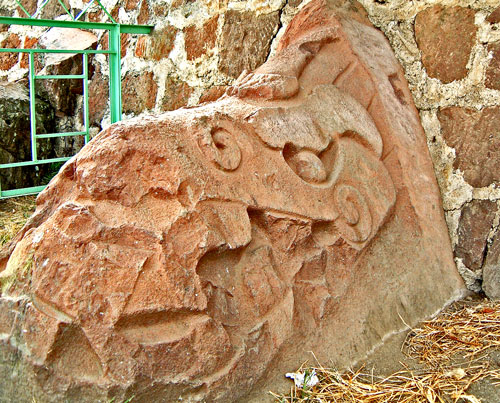
W0010TO: Serpent CarvingThe north-western section of Teotenango’s central complex is known as the Grupo de la Serpiente (Group of the Snake). The group is principally constructed upon Structure 2D, which is a huge platform 120 metres long, 40 metres wide and two tiers high. On the east side of the structure is a large carved serpent head, which gives the group its name. The serpent is typically styled, with a beastly snout (which has been largely broken), a fierce brow, sharp teeth (also broken) and curling fangs (clearly visible emanating from the corner of the mouth). This example cleverly uses the same swirling motif for both the nose and the fangs, which suggests the swirl has its own inherent meaning – perhaps symbolic of a swirling galaxy or the cosmos as a whole. Images of this beastly serpent can be found in most cities throughout Mesoamerica and it is thought to be representative of a principle deity known as Quetzalcoatl – the feathered serpent. Where the serpent carving meets the wall of Structure 2D, there appears to be the beginning of plumes of feathers which radiate as straight lines (see fig. W0010TO). 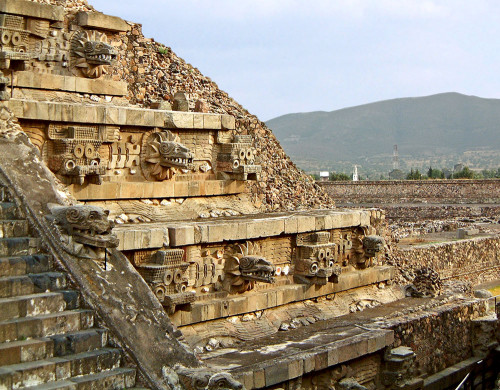
W0037TN: Temple of Quetzalcoatl at Teotihuacan This style of Quetzalcoatl imagery is probably best known from Teotihuacan, where the Temple of Quetzalcoatl is adorned with ornate serpent heads that feature plumes sprouting from the neck like petals with straight lines radiating behind. The image is thought to be representative of Quetzalcoatl as the sun god with the plumes of feathers representing radiant beams of light. Other examples of this monstrous snake are found in a bicephalic form and are thought to symbolise the ecliptic path. In all cases, the serpent is related to the cosmos and the carving on Structure 2D almost certainly tells us the structure was related to cosmological observation or religious activity.

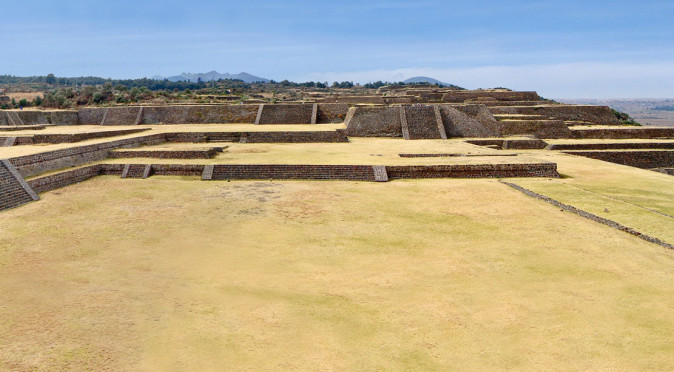
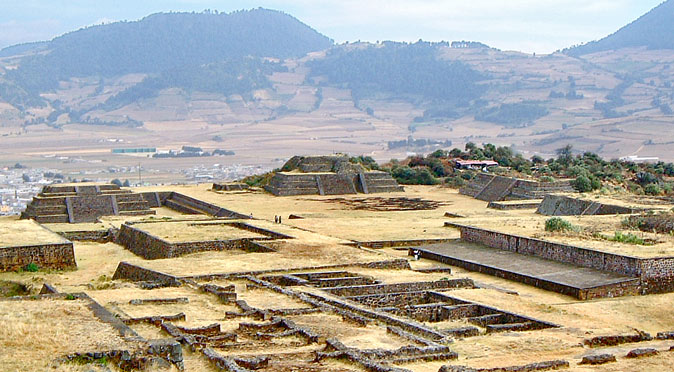
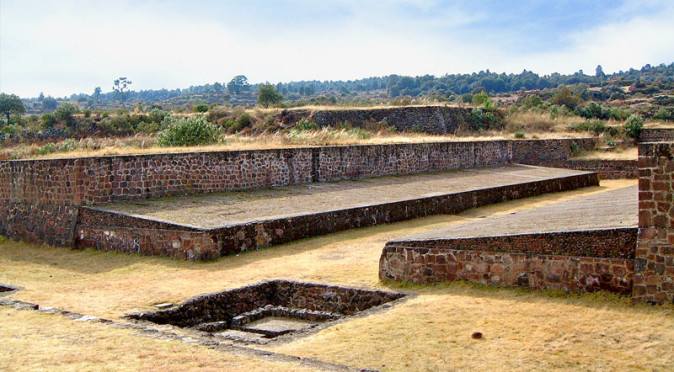
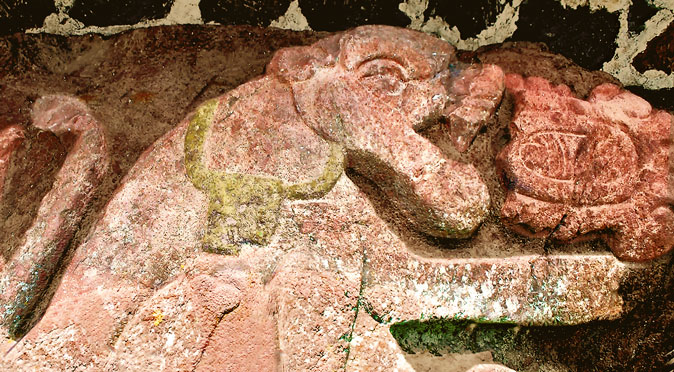
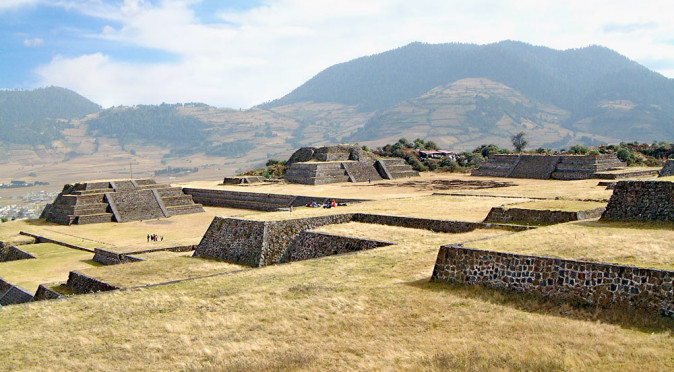
Since formal excavation work was carried out in the 19, the site and its museum have been managed by the Instituto Mexiquense de Cultura. There are two reasons for this. First, the excavation and restoration work was done by the Instituto Mexiquense de Cultura and not by federal Instituto Nacional de Antropologia e Historia as was customary. Second, a series of constitutional reforms since that time has sought to encourage more direct participation of state and local authorities in the preservation and management of archeological sites and other monuments to Mexico’s culture and history. However, as the reforms passed, INAH issued warnings about the Teotenango site’s vulnerability to encroachment due to the urban development taking place in Tenango del Valle. Of the 600 hectares set aside by the initial project, only two-thirds is still considered to be adequately protected. Urban development in the Tenango del Valle area has accelerated since the yearand many constructions now border the protected area, which is not fenced. Encroachment generally takes the form of these constructions threatening the stability of site structures above and below the surface as well as the unauthorized taking of objects at the site. Almost all of this is occurring at the site’s south and west sides, where almost no formal excavation work has been done and about which little is known.